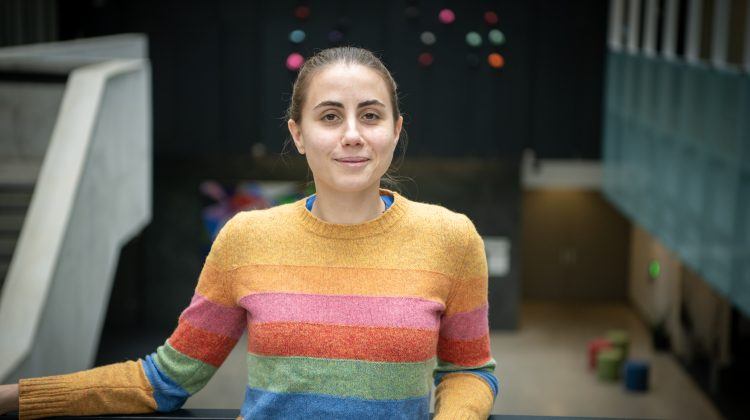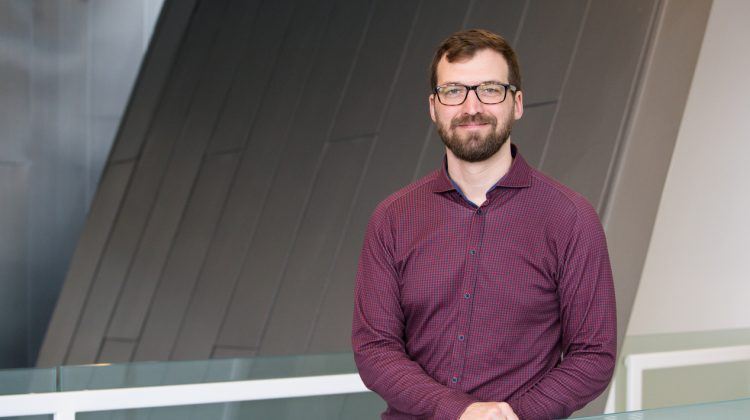Perimeter Hosts Strings 2023: Spotlighting new directions and uniting a community
In July 2023, 200 physicists gathered at Perimeter, and 1,400 joined online, for the flagship annual conference of the extended string theory community.
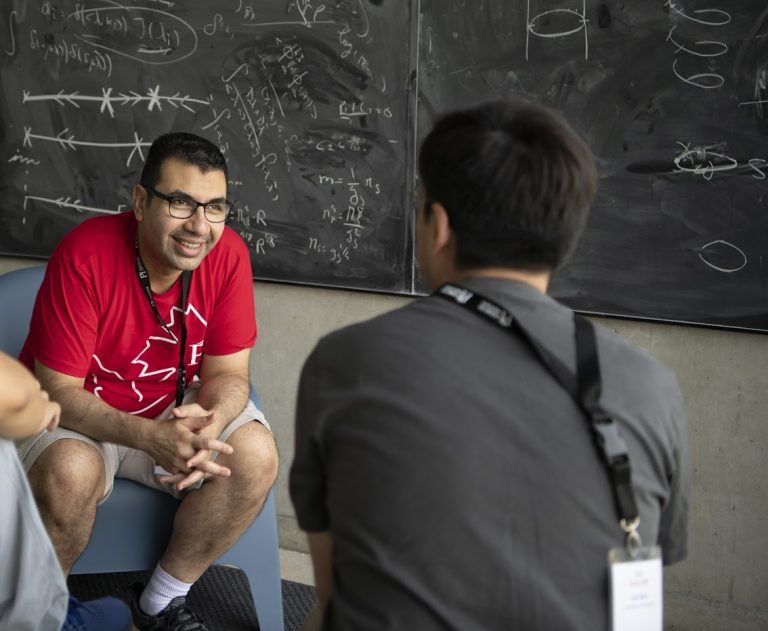
During a bustling summer week in 2023, Perimeter was so full of scientists one might think extra dimensions would be needed to make them fit. The atrium was packed with temporary tables, the line up at the espresso station wound through the Black Hole Bistro, and chalkboards from the interior to the reflective pool outside were filled with equations and insights.
“Welcome to Strings!” Perimeter Director Rob Myers told the gathered researchers. More than 200 came in person, and many more joined the hybrid conference online. “The Strings conferences are the flagship meetings for our research community. We here at Perimeter are thrilled to be hosting this year’s event.
The evolving state of string theory
String theory as we know it today began reshaping the landscape of physics about 40 years ago. It reimagined elementary particles – things like electrons and quarks – as vibration modes in tiny, energetic strings.
Ed Witten, one of the early thinkers who established string theory as a field, and an attendee at Strings 2023, once described string theory like this: “The idea of string theory is that elementary particles, instead of being point particles that obey quantum mechanical laws, are instead little loops of vibrating string that also obey quantum mechanical laws. The beauty of this is that it describes many things at once.” Something like a quark may be as complex and multilayered as a middle C played on a violin, full of overtones and undertones, says Witten, but the string itself, and its vibrations, are simple.
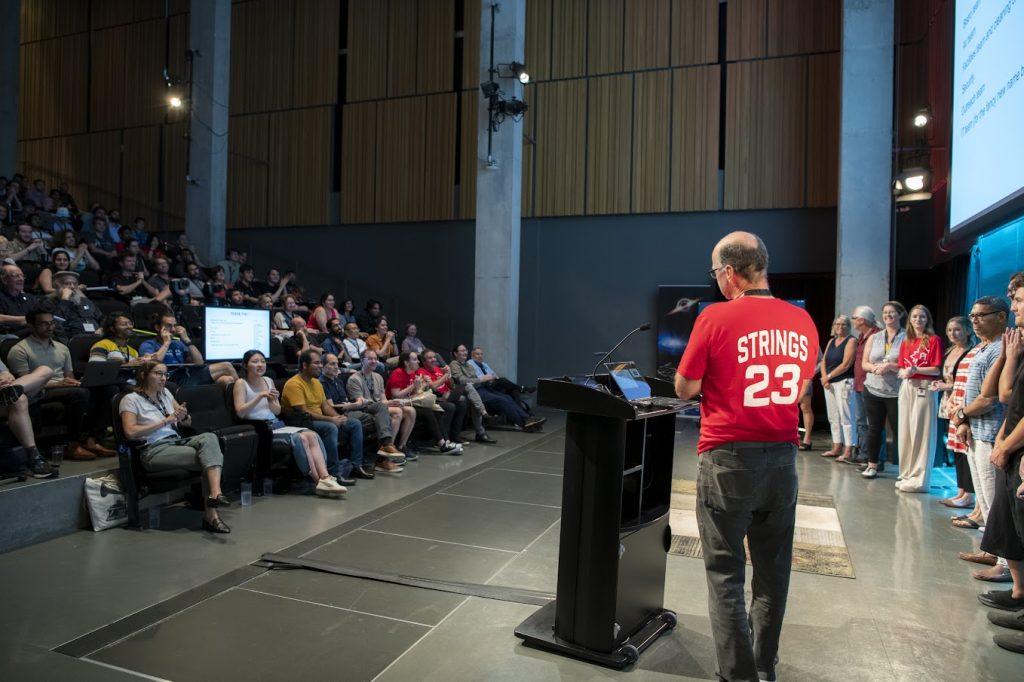
By reframing our view of reality in these terms, string theorists hoped to create a deeper, simpler, more encompassing understanding of the universe.
This quest for simplicity – ironically – brought complex new ideas into the lexicon of modern physics. Extra dimensions. The multiverse. Holography. Some researchers view these as glimpses of a deeper reality, others as a useful tool kit for tackling tough problems in subfields from condensed matter to quantum information. Many take both views.
As Andrew Strominger, Director of the Center for the Fundamental Laws of Nature at Harvard University, and another of the leading figures in the field, points out: string theory “doesn’t mean a small group of people narrowly working on some idea that came out 50 years ago. Rather, it’s a huge tree full of ideas.”
“Just today,” says Strominger reflected during the conference, “we were talking about how astonishing it was that these tools could solve problems that people had been working on for decades, and that these are fundamental problems, not peripheral problems.”
“[String theory] has gone a long way towards the solution of problems…within classical general relativity – problems about the structure of black holes,” he adds. “It has solved problems in pure mathematics. It has solved problems in condensed matter physics.
A gathering of giants – and rising stars
String theorists began gathering yearly in 1988 (they missed two years in the early 90s). The annual conference, known simply as Strings, has grown into a major international meeting – one of the largest in theoretical physics.
This iteration of Strings – the 34th installment, known on T-shirts and conference proceedings as STRINGS 23 – was wide-ranging. Talks covered the latest development in quantum fields, strings, and gravity, and connected work in quantum information, quantum matter, phenomenology, and pure mathematics. Attendee Juan Maldecena quipped that the Strings conference ought to rebrand itself as an acronym: “Solid Theoretical Research into Natural Geometric Structures.”
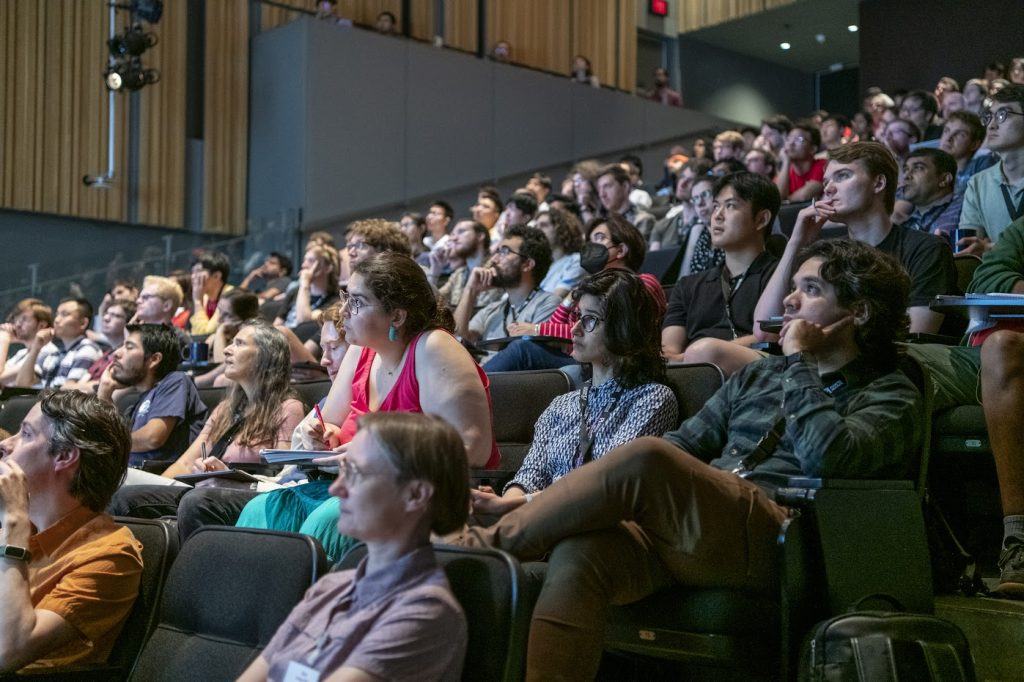
Strings 23 was also a coupling of old ideas and new ones, of giants in the fields and young researchers with fresh approaches. Roughly half of the 24 research talks were given by postdoctoral fellows, while dozens of graduate students showcased their work in the gong show and poster sessions.
John Preskill gave one of four invited “challenge talks” at the conference – that is, talks meant to challenge the gathered scientists with developments in related fields that might shape the research of the near future. Preskill’s chosen topic – using quantum simulators and machine learning to learn about fundamental physics – illustrates the range of the Strings conference and how deeply string theory is intertwined with other cutting-edge work in modern physics.
In line with the conference’s spirit, Preskill’s own research demonstrates the value of interdisciplinary dialogue between different generations of scientists. His student Robert Huang “came to Caltech a few years ago with a very strong background in machine learning, and knowing hardly anything about quantum physics, but with the ambition to fly. I, on the other hand, didn’t know anything about machine learning. It wasn’t clear to me why they would be complementary. But we’ve done a lot of things together – and there are a lot of interesting things happening at that intersection.”
A conference that almost wasn’t
But a broadening field brings with it its own set of challenges. The large conference is difficult to pull off, and the uncertainty introduced by the COVID-19 pandemic – which forced two previous conferences to go virtual – only exacerbated the issue.
The shift to remote conferencing in the Zoom era led to a reassessment of the need for a physical meeting, and growing specialization within the field led some to question the role of one annual conference for the field rather than the several subfield-specific conferences such as Amplitudes, Bootstrap, and It from Qubit.
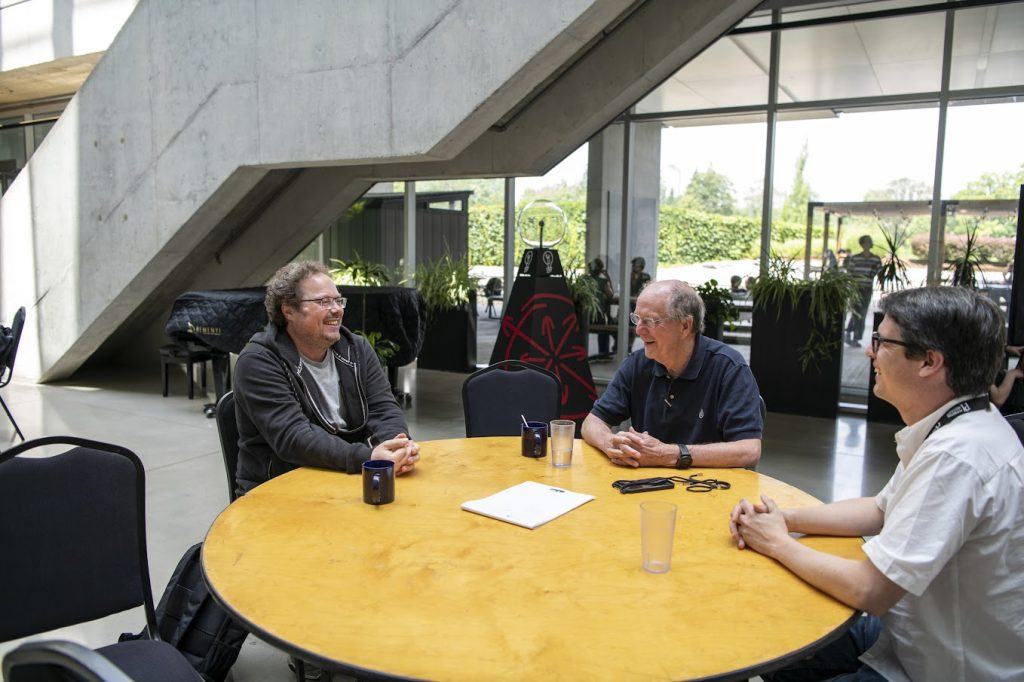
In response to these challenges, and with the conviction that the annual Strings conference remains a vital space for the community to update itself on the latest developments in this broad research field, an Ad Hoc Strings Planning Committee was formed in the summer of 2022.
And so it was that on a sunny Wednesday morning in Waterloo – during the middle of Strings 2022 – the Perimeter Quantum Fields and Strings faculty were called on to host Strings 2023. The conference would be smaller, it would be hybrid, and it would be only 369 days away.
A community worth keeping connected
The Perimeter team knew that the annual conference was about more than just the science they loved. It was just as much about being a forum to bring the people doing that science together. To underscore this, they added community-building activities to the usual line up of scientific talks. Perimeter Faculty member Davide Gaiotto hosted a game night on the Monday featuring a ChatGPT-assisted trivia match. On Tuesday, some of the attendees stepped up to entertain their peers during music night. Wednesday’s banquet included a memorial and graduation ceremony, while Thursday afternoon was jam-packed with a public lecture, speaker dinner, and movie night running in parallel after a friendly soccer match in Waterloo Park.
Rest assured it wasn’t all fun and games. Another new tradition introduced at Strings 23 was a town hall. There, a proposal for the formation of an official Strings Planning Committee was raised for a vote and the community discussed updates to the Theory Postdoc Accord (by which institutions around the world coordinate offer deadlines). After the town hall, the discussion moved online to a new Discord server, which the organizers hope will keep the community connected throughout the year.
For Sabrina Pasterski, a Perimeter faculty member and principal investigator of Perimeter’s Celestial Holography Initiative, who was one of the conference organizers, the importance of this conference is that it brings together all the different things people are doing. “If we didn’t have an annual conference, we would all be in our own little communities. What’s the point of doing these very specific technical things, with supposedly aligned aims, if we’re not really staying together as one community?”
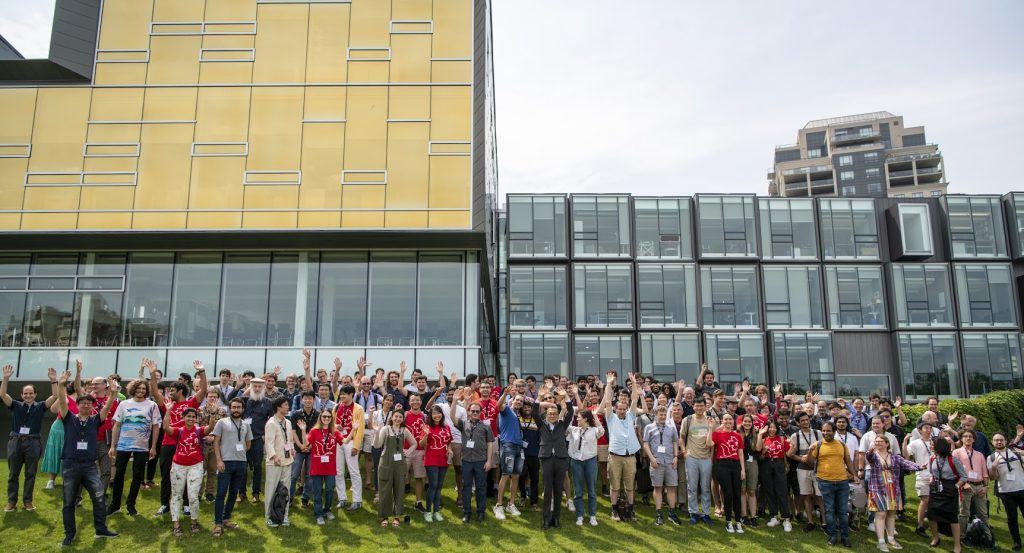
As she pointed out at the graduate celebration during Wednesday’s banquet: “The Strings conference is a place for young researchers to meet the giants whose shoulders we hope to stand on.”
“It will be at CERN next year, and I hope that the community-building aspects of this Strings conference will continue there,” Pasterski says. “The field is so broad and so vibrant that everybody has something to learn.”






















































































